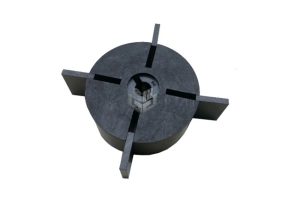Introduction
Graphite is a critical material in the production of mechanical seals due to its unique properties, including high thermal resistance, excellent lubricity, and outstanding chemical stability. These characteristics make graphite ideal for various industrial applications, particularly in the automotive and mechanical engineering sectors.
Types of Graphite Components for Mechanical Seals
1. Graphite Tubes
Graphite tubes are used extensively in mechanical seals due to their excellent thermal conductivity and resistance to thermal shock. They ensure reliable performance under high-temperature conditions.
2. Graphite Sleeves
Graphite sleeves provide a protective layer in mechanical seals, enhancing durability and reducing wear and tear. Their superior lubricity helps in maintaining the efficiency of the seals.
3. Graphite Rollers
Graphite rollers are essential components in mechanical systems where continuous rotation and high friction are involved. Their high-temperature resistance and self-lubricating properties ensure smooth operation and longevity.
4. Graphite Rotors for Automobiles
In the automotive industry, graphite rotors are used in various applications such as pumps and compressors. Their lightweight and high-strength properties contribute to the efficiency and performance of automotive systems.
5. Graphite Rings
Graphite rings are crucial in sealing applications due to their excellent sealing properties and resistance to high temperatures and chemical corrosion. They are widely used in pumps, compressors, and other mechanical equipment.
6. Graphite Sealing Rings for Mechanical Seals
Graphite sealing rings are designed to withstand extreme conditions, providing reliable sealing solutions in various industrial applications. Their ability to maintain integrity under high pressure and temperature makes them indispensable in mechanical seals.
Advantages of Using Graphite in Mechanical Seals
High Thermal Resistance
Graphite can endure high temperatures without degrading, making it ideal for applications that involve extreme heat.
Excellent Lubricity
Graphite’s self-lubricating properties reduce friction and wear, enhancing the lifespan of mechanical seals.
Chemical Stability
Graphite is resistant to a wide range of chemicals, ensuring durability and performance in corrosive environments.
Mechanical Strength
Graphite’s strength ensures that components made from it can withstand mechanical stress, reducing the need for frequent replacements.
Lightweight
Graphite’s lightweight nature contributes to the efficiency and performance of mechanical systems, particularly in the automotive industry.
Applications of Graphite in Various Industries
Automotive Industry
In the automotive industry, graphite is used in components such as rotors and rings, which are essential for the efficient functioning of vehicles. Its properties help in reducing wear and improving the overall performance of automotive systems.
Mechanical Engineering
Graphite components are widely used in mechanical engineering for seals, bearings, and other applications that require high thermal and chemical resistance. Their reliability ensures the smooth operation of mechanical systems.
Chemical Processing
Graphite’s resistance to chemical corrosion makes it ideal for seals and components used in chemical processing. It ensures longevity and consistent performance in harsh chemical environments.
Industrial Equipment
Graphite is used in various industrial equipment due to its durability and ability to withstand high temperatures and pressures. This makes it an essential material for sealing solutions in heavy machinery.
Conclusion
Graphite’s unique properties make it an indispensable material for mechanical seals across various industries. Its high thermal resistance, excellent lubricity, chemical stability, mechanical strength, and lightweight nature provide unmatched performance and reliability. As industries continue to evolve, the demand for high-quality graphite components is expected to grow, driving innovation and efficiency in manufacturing processes.


